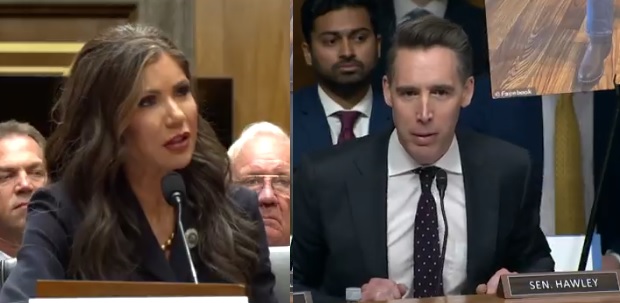In a landmark decision on Monday, the Supreme Court ruled that U.S. citizens do not possess an inherent right to bring their noncitizen spouses into the United States. This ruling solidifies existing immigration laws that regulate the entry of noncitizens and underscores the judiciary’s stance on interpreting constitutional rights within the context of national immigration policies.
The court, in a 6-3 decision along ideological lines, ruled against a California woman who sued the State Department and claimed her rights were violated because her Salvadoran husband’s green card application was denied without explanation.

Writing for the majority, Justice Amy Coney Barrett said Congress is free to write immigration laws in a way that gives priority to family unification, but the Constitution doesn’t require such policies. “This is an area in which more than family unity is at play: Other issues, including national security and foreign policy, matter too,” Barrett wrote.
Justice Samuel Alito, in his concurring opinion, stated, “The Constitution does not confer upon citizens a right to bring their noncitizen spouses to reside in the United States. Immigration policy is within the purview of the legislative and executive branches, and the courts must defer to these branches on such matters.”
The ruling reaffirms the federal government’s authority to enforce immigration controls and highlights the court’s deference to legislative intent. This decision echoes past rulings where the court has upheld broad discretion by the executive branch in enforcing immigration laws, particularly in cases involving noncitizen entry and residency.
Advocates for stricter immigration controls praised the decision, arguing that it protects national sovereignty and ensures that immigration policies reflect the nation’s interests. “This ruling is a victory for the rule of law,” said Mark Krikorian, Executive Director of the Center for Immigration Studies. “It reinforces the principle that immigration is a privilege, not a right, and underscores the importance of maintaining rigorous standards for entry into the country.”
Conversely, critics of the ruling argue that it undermines family unity and imposes undue hardships on American citizens married to noncitizens. The American Civil Liberties Union (ACLU) expressed concern that the decision fails to recognize the fundamental human rights of citizens to live with their spouses. “This decision is a stark reminder of the need for comprehensive immigration reform that prioritizes the rights and dignity of individuals,” said Omar Jadwat, Director of the ACLU’s Immigrants’ Rights Project.
The decision has profound implications for the estimated hundreds of thousands of mixed-nationality couples residing in the United States or seeking to reunite. Under current laws, U.S. citizens must navigate a complex and often lengthy process to secure visas for their noncitizen spouses, with no guarantee of success. This process includes rigorous background checks, financial sponsorship requirements, and potential waiting periods that can span several years.
The court’s ruling underscores the importance of legislative action to address the gaps and inconsistencies in the current immigration system. Despite the contentious nature of immigration policy, this decision reiterates the judiciary’s role in interpreting existing laws rather than creating new rights.
Legal experts suggest that this ruling could influence future cases involving immigration and constitutional rights. By reaffirming the limited scope of judicial intervention in immigration matters, the Supreme Court has set a precedent that could affect how lower courts handle similar cases in the future.
The Biden administration, which has advocated for more inclusive immigration policies, now faces increased pressure to pursue legislative reforms. However, given the polarized nature of immigration politics, achieving consensus on comprehensive reforms remains a formidable challenge.
This decision also places a spotlight on the broader debate over immigration policy in the United States. As policymakers grapple with balancing national security, economic needs, and humanitarian considerations, the Supreme Court’s ruling serves as a critical reminder of the complexities inherent in immigration law.
In the wake of the decision, U.S. citizens with noncitizen spouses are left with limited recourse. Immigration attorneys recommend that affected individuals seek legal counsel to navigate the existing processes and explore potential pathways to reunification.
Ultimately, the Supreme Court’s decision underscores the enduring tension between individual rights and national sovereignty in the realm of immigration. As the nation continues to navigate this complex landscape, the ruling serves as a pivotal moment in the ongoing discourse on immigration policy and its implications for American families.
